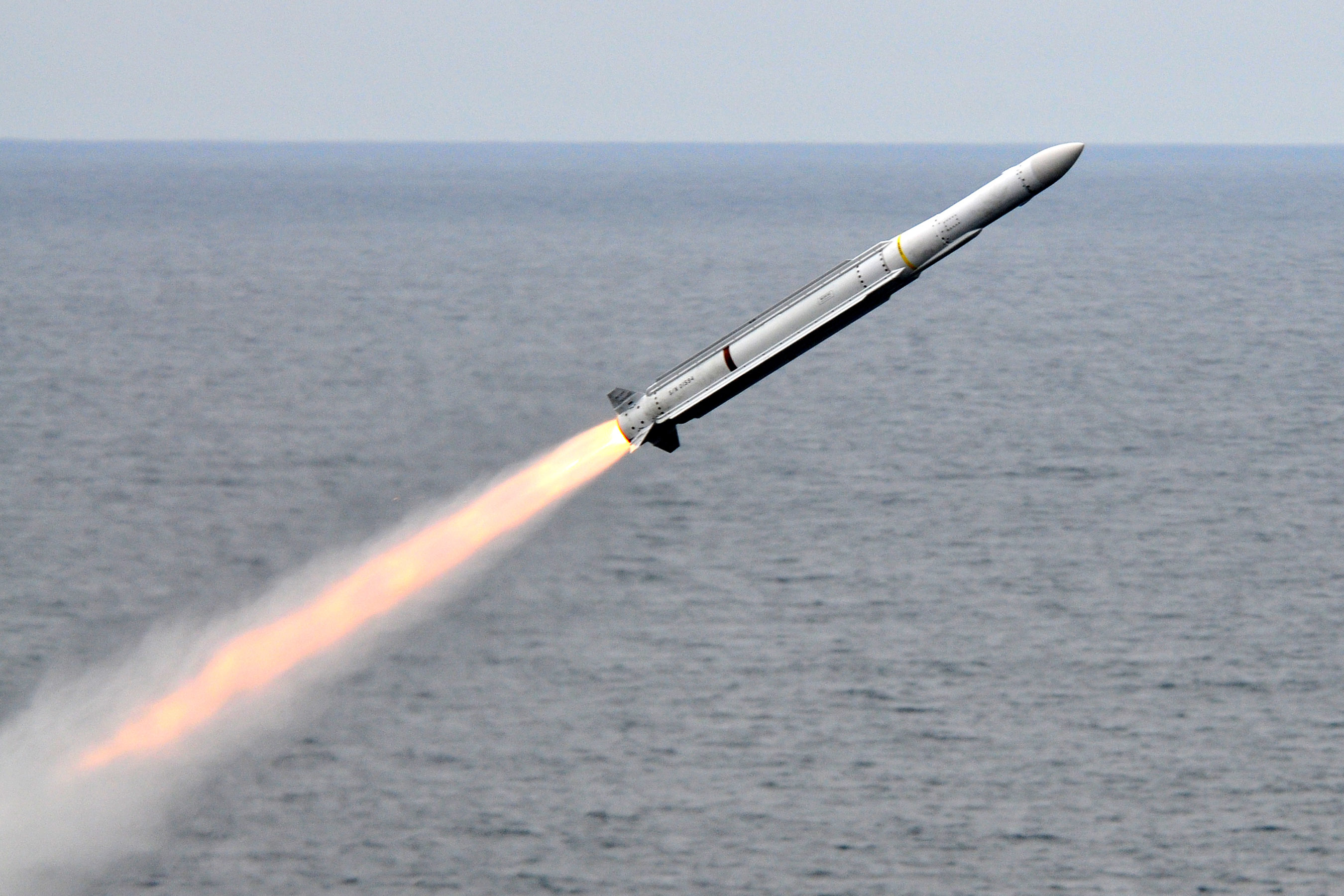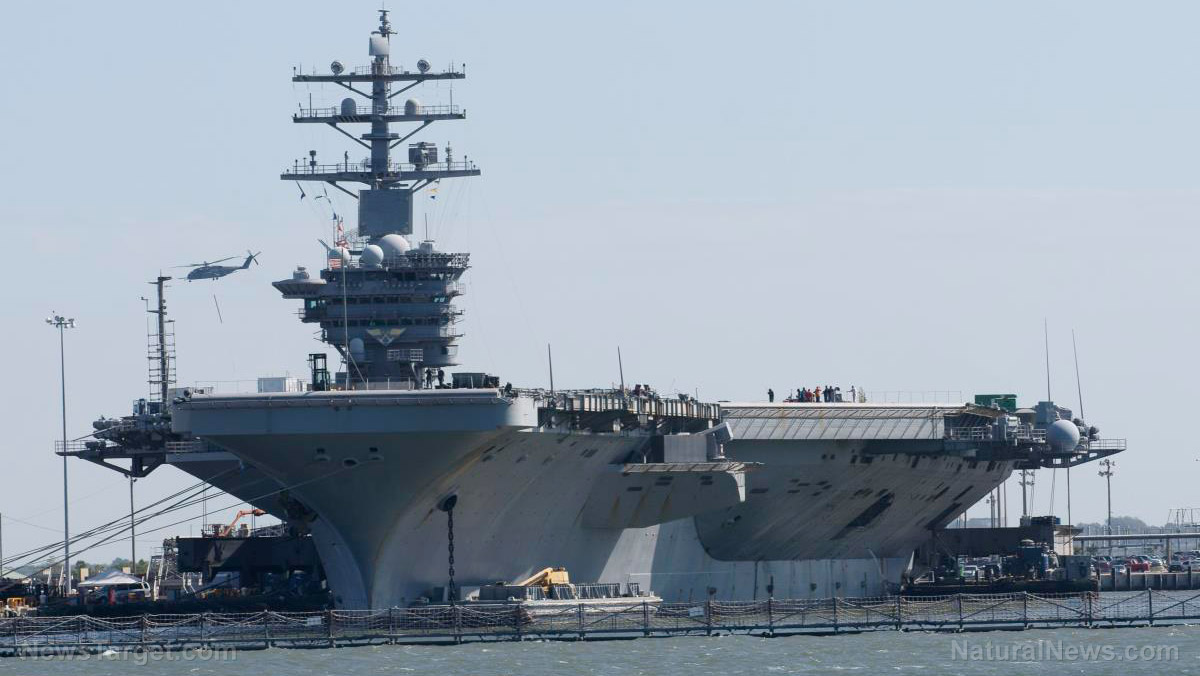New hypersonic missile fails to launch during Air Force test flight
04/15/2021 / By Ramon Tomey

A new hypersonic missile set to be used by the Air Force failed to launch during a test flight. The AGM-183A Air-launched Rapid Response Weapon (ARRW) did not deploy from the aircraft it was attached to in an April 5 test run.
Because of the ARRW booster’s failure, the B-52H Stratofortress carrying it returned to Edwards Air Force Base in California with the missile still attached.
The ARRW system is designed to launch in mid-air from beneath the wing of a carrier plane. However, the April 5 setback meant that additional work will be needed to get the new weapon up to speed.
“While [the ARRW] not launching was disappointing, the recent test provided invaluable information to learn from and continue ahead. This is why we test,” Armament Directorate Program Executive Officer Brig Gen. Heath Collins said in an April 6 statement. “The ARRW program has been pushing boundaries since its inception and taking calculated risks to move this important capability forward.”
Built for the Air Force by aerospace firm Lockheed Martin, ARRW is designed to “provide the ability to destroy high-value, time-sensitive targets.” The statement also said ARRW will “expand precision-strike weapon systems’ capabilities by enabling rapid-response strikes against heavily-defended land targets.”
The April 5 test flight was the eighth after seven trials where the B-52H intentionally did not fire the booster. The objectives of the test included demonstrating that the booster can be safely released. The test also sought to assess key elements of the missile system’s performance. Engineers and testers would be able to explore the defect and resume testing as the missile was retained, according to the statement.
The ARRW is expected to be the first hypersonic weapon to become operational with the U.S. military.
World powers work on their hypersonic weapons
Hypersonic weapons usually travel at speeds above Mach 5, or at least five times faster than the speed of sound – which is about 761 mph at sea level. ARRW will supposedly fly at a speed between Mach 6.5 and Mach 8, which is equal to 5,000 to 6,000 mph. Flying at such speeds will take the ARRW only 10 to 12 minutes to strike targets located 1,000 miles away, an October 2020 report by The Drive said.
Once the booster reaches such speeds, ARRW will deploy an unpowered but maneuverable glide vehicle containing the warhead. This quality differentiates hypersonic weapons such as ARRW from intercontinental ballistic missiles (ICBMs) that follow predictable trajectories.
The U.S. military has also focused on tapping 5G technology in line with the eventual adoption of ARRW and other hypersonic weapons. Italian geographer and journalist Manlio Dinucci elaborated on this topic in a December 2019 piece for Global Research. He wrote that 5G “will play an essential role for the use of hypersonic weapons … which travel at a speed superior to Mach 5 (five times the speed of sound).”
Dinucci continued that 5G technology enables the collection and transmission of large quantities of data to guide hypersonic missiles on various trajectories and change their direction to avoid interceptor missiles.
Not to be outdone, other world powers have commenced work on their own hypersonic missile systems. China’s DF-17 hypersonic missile was first unveiled in 2013 and entered service six years later – making its debut during a military parade celebrating the country’s 70th anniversary. This medium-range ballistic missile can reach up to 2,500 kilometers (1,553.4 miles) and can be mounted to a DF-ZF hypersonic glide vehicle. U.S. intelligence sources described the hypersonic missile as “remarkably accurate” during field tests, being able to land “within meters” of intended targets. (Related: China unveils “doomsday” hypersonic missiles that can strike any U.S. city in 30 minutes, while the Pentagon is focused on making sure transgenders feel safe in the military.)
Russia has also worked on its version of a hypersonic missile. A December 2019 report by the Associated Press described the Avangard hypersonic glide vehicle as being able to fly 27 times faster than the speed of sound. It is mounted on top of an ICBM, but can make sharp maneuvers that foil any attempts to intercept it. Furthermore, the Avangard carries a nuclear weapon of up to two megatons. The hypersonic vehicle was first launched in 2018 from the Dombarovskiy missile base. It successfully hit a practice target in the Kura shooting range in Russia’s far eastern Kamchatka Peninsula, located 3,700 miles away.
Visit MilitaryTechnology.news to read more articles about ARRW and other hypersonic missile systems.
Sources include:
Tagged Under: AGM-183A ARRW, Air-launched Rapid Response Weapon, B-52H Stratofortress, Edwards Air Force Base, future weapons, hypersonic missile, hypersonic weapon, Lockheed Martin, military technology, missile system, test flight, US Air Force
RECENT NEWS & ARTICLES
COPYRIGHT © 2018 MILITARYTECHNOLOGY.NEWS
All content posted on this site is protected under Free Speech. MilitaryTechnology.news is not responsible for content written by contributing authors. The information on this site is provided for educational and entertainment purposes only. It is not intended as a substitute for professional advice of any kind. MilitaryTechnology.news assumes no responsibility for the use or misuse of this material. All trademarks, registered trademarks and service marks mentioned on this site are the property of their respective owners.





















